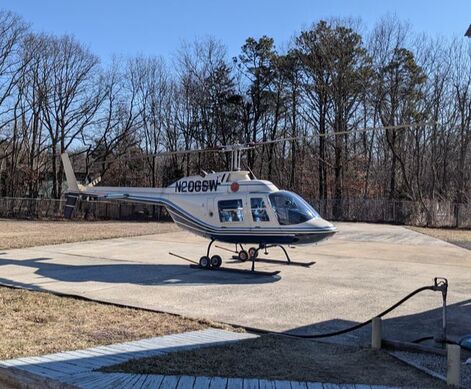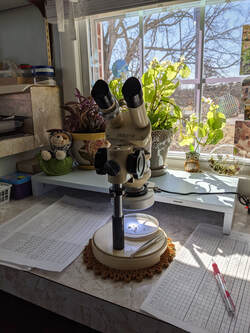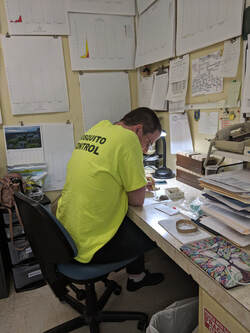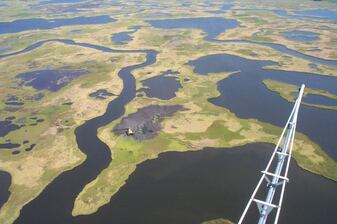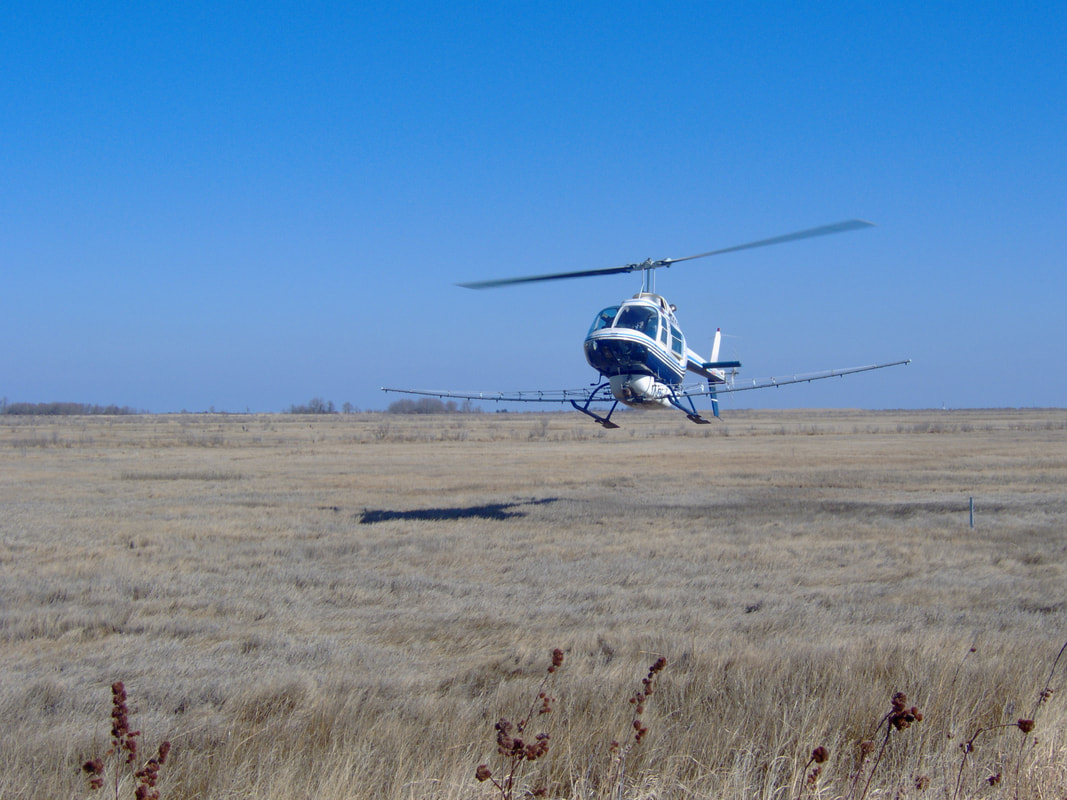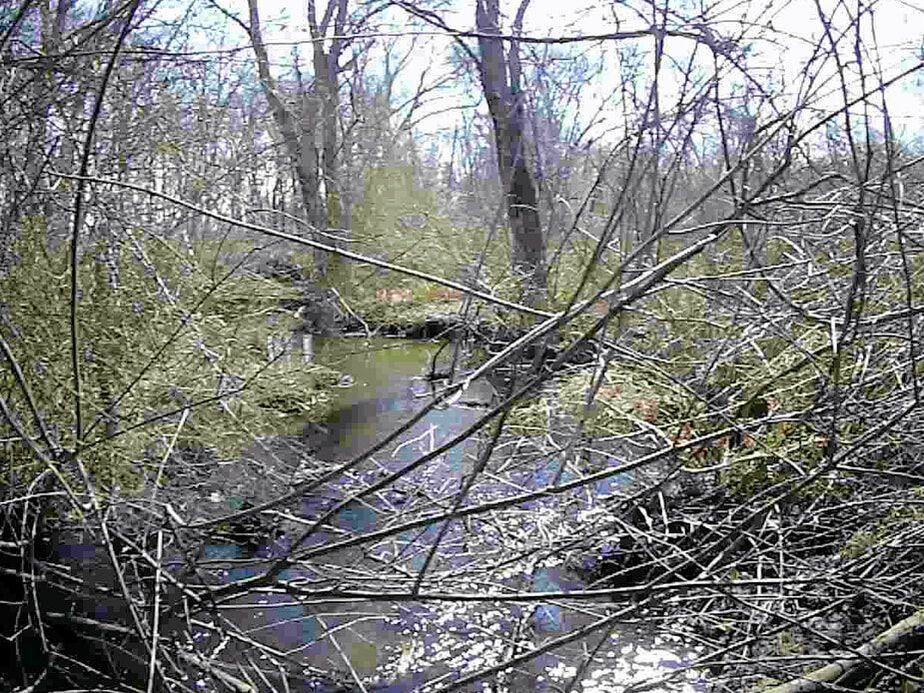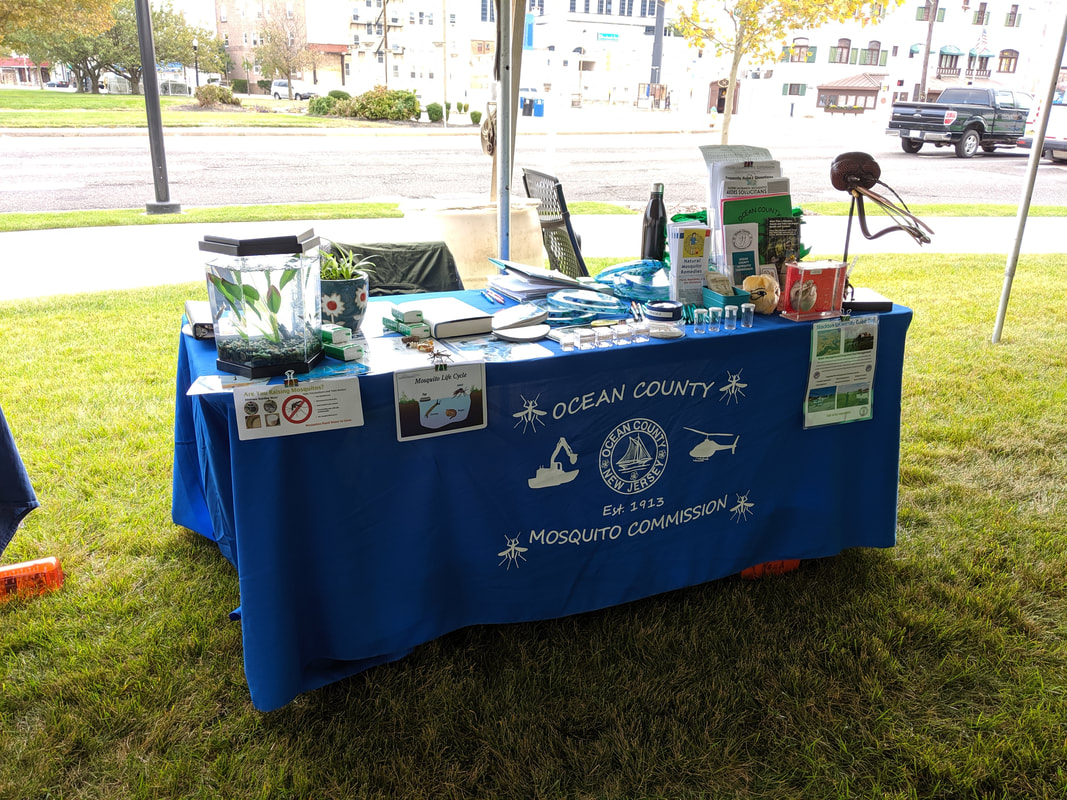About the Ocean County Mosquito Commission
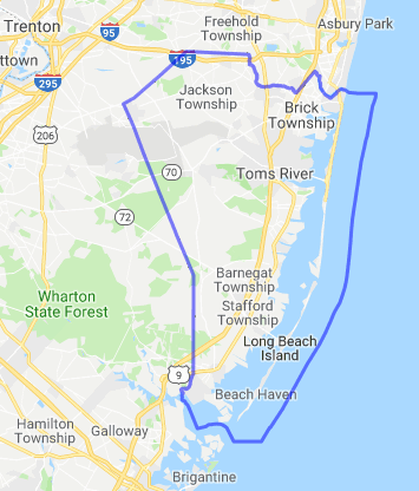
Ocean County New Jersey is made up of 33 municipalities which cover a land area of approximately 640 square miles. Ocean County's population continues to grow at tremendous rates. The 2010 estimate is 576,000 while the 2019 estimate is at 607,186.
Ocean County being a resort area, the summer population increases tremendously. It is estimated that the population during the summer period is more than tripled, and on any given weekend the total population can be more than 1.5 million.
Our most complained about mosquito in the area is the New Jersey Salt Marsh Mosquito (Aedes sollicitans), because of the close proximity of our coastal resort areas and the breeding grounds. There are 28,000 acres of saltmarsh in the county and nearly 60% of that has the potential to breed these mosquitoes. In addition to the saltmarsh, a significant amount of freshwater habitats are located throughout the county.
More and more complaints are being received each year for mosquito control where the mosquito populations are actually quite low compared to what they used to be. This is largely a result of new residents moving to Ocean County from other areas where mosquitoes are almost non-existent.
Ocean County's Mosquito Control Program is a comprehensive integrated program which utilizes a balance of various techniques and a detailed surveillance program to monitor the progress of those techniques. Mosquito control in New Jersey is accomplished ideally under the "Best Management Practices for Mosquito Control of New Jersey." These guidelines are adapted from the U.S. Environmental Protection Agency's Pesticide Environmental Stewardess Program under the American Mosquito Control Association "Partnership Strategy Document" for the New Jersey Mosquito Control Association. The Ocean County Mosquito Control program comprehensively follows every aspect of that plan. This uses a variety of environmentally sound techniques to reduce the potential of disease and the annoyance caused by mosquitoes.
Ocean County being a resort area, the summer population increases tremendously. It is estimated that the population during the summer period is more than tripled, and on any given weekend the total population can be more than 1.5 million.
Our most complained about mosquito in the area is the New Jersey Salt Marsh Mosquito (Aedes sollicitans), because of the close proximity of our coastal resort areas and the breeding grounds. There are 28,000 acres of saltmarsh in the county and nearly 60% of that has the potential to breed these mosquitoes. In addition to the saltmarsh, a significant amount of freshwater habitats are located throughout the county.
More and more complaints are being received each year for mosquito control where the mosquito populations are actually quite low compared to what they used to be. This is largely a result of new residents moving to Ocean County from other areas where mosquitoes are almost non-existent.
Ocean County's Mosquito Control Program is a comprehensive integrated program which utilizes a balance of various techniques and a detailed surveillance program to monitor the progress of those techniques. Mosquito control in New Jersey is accomplished ideally under the "Best Management Practices for Mosquito Control of New Jersey." These guidelines are adapted from the U.S. Environmental Protection Agency's Pesticide Environmental Stewardess Program under the American Mosquito Control Association "Partnership Strategy Document" for the New Jersey Mosquito Control Association. The Ocean County Mosquito Control program comprehensively follows every aspect of that plan. This uses a variety of environmentally sound techniques to reduce the potential of disease and the annoyance caused by mosquitoes.
Components of Ocean County's Mosquito Surveillance and Control Program
Larval Mosquito Surveillance
Inspectors make continuous checks of all the saltmarsh by foot, boat, amphibious equipment, and helicopters to guide the larviciding program. All the county's saltmarshes are inspected at least twice a week during the breeding season and additional inspections are made following every larvicide application to determine it's effectiveness. Inspections of breeding areas for freshwater species are made by ground. Five ground inspection crews make a complete circuit of the county once every one to two weeks. Larvae are brought back to the lab and identified by the ID Specialist. Extensive records of breeding and treatment have been made, cataloged, and retained for more than 40 years.
Adult Mosquito Surveillance
28 standard New Jersey Light Traps are used to monitor the adult mosquito population throughout the county. From May to October mosquitoes are gathered from these traps everyday to be speciated and counted. During the collection of these traps, 60 locations all over the county are visited to perform a Landing Rate Count. This count is a technique used to see how many adult mosquitoes are currently active in a certain area, as oppose to the larval surveillance that looks for mosquitoes in their aquatic life stage. Ocean County is a cooperator in all aspects of the State Vector Surveillance Program. In this program different trapping techniques are used to capture mosquitoes for submission to the State Health Department and the CDC for disease analysis and recording.
Using these techniques, the commission is aware of the adult mosquito populations throughout the county on a day to day basis and is notified by the State Health Department when those mosquitoes may be a public health threat. Specific information for these trapping techniques can be found under "Trapping" in the About Us tab or by clicking HERE.
Using these techniques, the commission is aware of the adult mosquito populations throughout the county on a day to day basis and is notified by the State Health Department when those mosquitoes may be a public health threat. Specific information for these trapping techniques can be found under "Trapping" in the About Us tab or by clicking HERE.
Water Management
The commission maintains a large water management program and performs Open Marsh Water Management on the saltmarshes of Ocean County. This technique developed in the early 1970's by the County Mosquito Commission, NJ State DEP, and Rutgers University has been accepted and approved by all state and federal regulatory agencies.
Open Marsh Water Management (OMWM) is a technique where specialized pieces of equipment are used to manipulate the saltmarsh so the native fish can access and eliminate mosquito larvae. Ponds are created to serve as reservoirs for kill-fish and ditches are used to allow these fish to access areas that are known to breed mosquitoes. This process has been proven very successful and environmentally compatible in the saltmarsh environment. In 1976 Ocean County was one of the first in the nation to acquire an amphibious rotary ditcher to perform this work and today we operate four of the latest versions of this machine. This program is an ongoing program operating year round and has eliminated the necessity to treat hundreds of acres of previously breeding saltmarsh.
Open Marsh Water Management (OMWM) is a technique where specialized pieces of equipment are used to manipulate the saltmarsh so the native fish can access and eliminate mosquito larvae. Ponds are created to serve as reservoirs for kill-fish and ditches are used to allow these fish to access areas that are known to breed mosquitoes. This process has been proven very successful and environmentally compatible in the saltmarsh environment. In 1976 Ocean County was one of the first in the nation to acquire an amphibious rotary ditcher to perform this work and today we operate four of the latest versions of this machine. This program is an ongoing program operating year round and has eliminated the necessity to treat hundreds of acres of previously breeding saltmarsh.
Biological Control
The Ocean County Mosquito Commission collaborates with the NJ State Mosquito Association and the New Jersey Division of Fish and Wildlife in their fish stocking program. Several species of mosquito eating fish are utilized to stock areas of permanent and non-moving water which breed mosquitoes. Sites which are evaluated to be good candidates for fish stocking are stocked with Fathead Minnows or Gambusia minnows (mosquito fish). These fish populations are then observed and evaluated to determine their success of controlling mosquito populations.
Larviciding
Treating mosquitoes in their earliest stage possible is the most effective method. It is safer and more economical to treat just several thousand acres of breeding habitat with a low toxicity product than to have to treat several hundred square miles of area that adult mosquitoes have inhabited with a mosquito adulticide. This is why we focus our treatment program on larviciding. This targets mosquitoes when they are in their larval aquatic stage of development. There are two main aspects to this program.
-In upland habitats and domestic areas, we utilize a 5 truck crew that makes a circuit of the county once every 1-2 weeks. They visit hundreds of known mosquito breeding sites in every municipality and inspect for mosquito larvae. Any larvae breeding sites that are found are treated using a material called BTI; Bacillus thuringiensis H-14. This material is an inactive bacteria found to be specifically toxic to mosquito larvae and one of the least toxic materials to any other organisms sharing the habitat and to humans.
-The second part of the program is aerial larviciding. Twice weekly our two helicopters make a complete survey of the 28 thousand acres of saltmarsh and wood-line areas located in Ocean County, and inspect over a hundred known breeding locations for mosquito larvae. When breeding is found these sites are treated with a liquid formulation of BTI called Vectobac 12AS. To be effective the BTI needs to be eaten by the mosquito larvae, so treatment is targeted for the earliest stages of larval development. Treated areas are generally checked again in 24-48 hours after the first treatment to check for larval mortality and to evaluate treatment effectiveness.
-In upland habitats and domestic areas, we utilize a 5 truck crew that makes a circuit of the county once every 1-2 weeks. They visit hundreds of known mosquito breeding sites in every municipality and inspect for mosquito larvae. Any larvae breeding sites that are found are treated using a material called BTI; Bacillus thuringiensis H-14. This material is an inactive bacteria found to be specifically toxic to mosquito larvae and one of the least toxic materials to any other organisms sharing the habitat and to humans.
-The second part of the program is aerial larviciding. Twice weekly our two helicopters make a complete survey of the 28 thousand acres of saltmarsh and wood-line areas located in Ocean County, and inspect over a hundred known breeding locations for mosquito larvae. When breeding is found these sites are treated with a liquid formulation of BTI called Vectobac 12AS. To be effective the BTI needs to be eaten by the mosquito larvae, so treatment is targeted for the earliest stages of larval development. Treated areas are generally checked again in 24-48 hours after the first treatment to check for larval mortality and to evaluate treatment effectiveness.
Source Reduction
Source reduction is the elimination of sites where mosquitoes could breed. This is the most basic and the most efficient method of mosquito control available. Sanitation is the most simplest form of source reduction whereby small dumping sites, discarded tires, and other household items are continuously removed by our ground larviciding crews whenever necessary. Coordination with municipal works departments has been effective in accomplishing cleanups. The Commission also cooperates in the county's tire amnesty program administered through the Ocean County Solid Waste Management Department. In the off season, our staff actively seeks out sites that may have blockages in streams and other water ways from fallen debris or new beaver dams. They work hard all winter clearing these areas to ensure the water is flowing properly to keep mosquitoes from being able to breed in stagnant water. During the summer our inspectors will utilize Yard Audits for concerned residents of Ocean County that would like their property checked for possible breeding locations. In most of these causes education on source reduction and recommendations on how to elimination of standing water around the yard will reduce the mosquito breeding population for the resident. See "What You Can Do" under the More Info tab or click HERE for information on how you can help with source reduction efforts.
Events and Education
The Ocean County Mosquito Commission participates in many opportunities for community outreach and education. During the year we try to participate in local fairs, community days, and school events to discuss mosquito related topics. Handouts are provided with information on mosquito control, virus education, and fun activities for children to learn about mosquitoes. We bring live mosquito fish and samples of larvae collected in the field, as well as a variety of different mosquito species to view under the microscope and magnifying containers. When visiting schools, activities range from PowerPoint presentations to students being able to identify mosquitoes on their own! If you are interested in having us come to one of your events or visit your school visit the Events tab at the top of the page. There is also a calendar with all of our events we will be participating in, come say hi! If you would like to request any information we provide at these events please email us at [email protected] for more information.
Adulticiding
This technique is utilized only in the event that there is extremely high numbers of adult mosquitoes which are not able to be handled by larviciding. Adulticiding may also be the choice if surveillance techniques pointed to the presence of virus (Eastern Equine Encephalitis or West Nile Virus) in the mosquito population that will be a concern for public health. Any materials used would be formulations and application methods recommended by the New Jersey Agricultural Experiment Station at Rutgers University. Before any adulticiding event takes place, a public notice will be provided and the "Adulticiding" section in the About Us tab will be updated on this website. There is also a link to our adulticiding updates on the main page.


